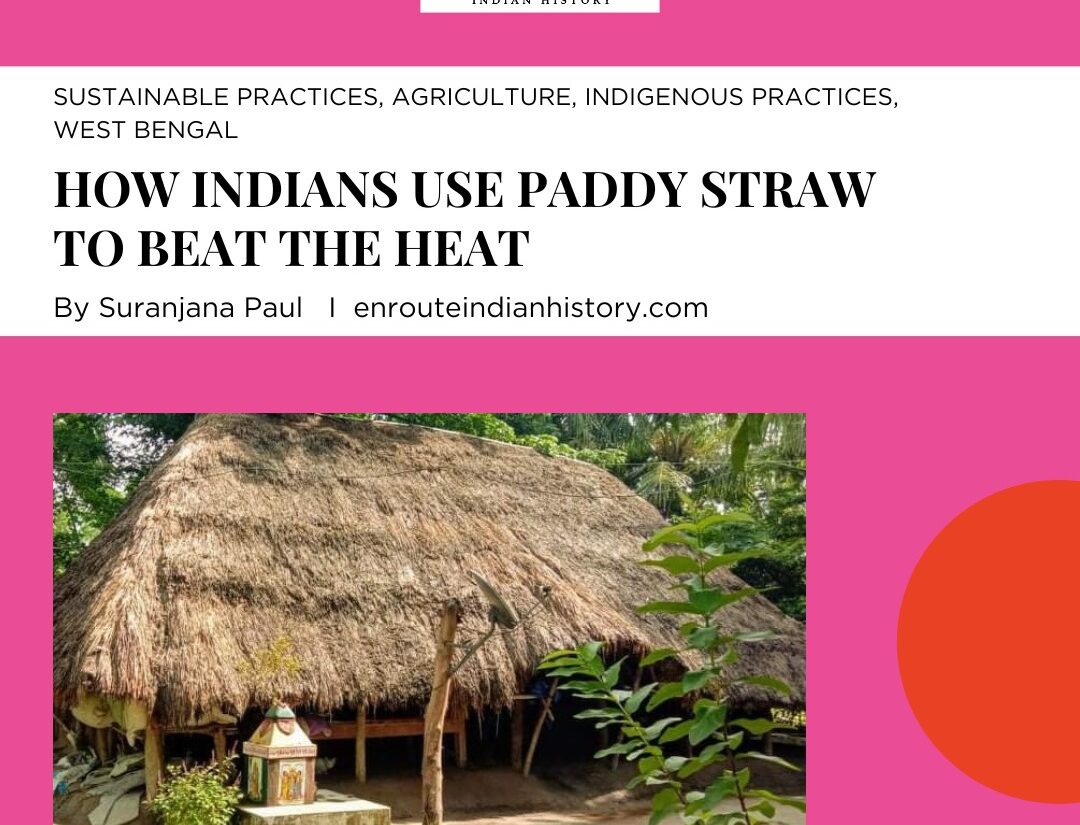Threads Of Time: A Journey Through The History Of Kota Doria Fabric
- EIH User
- April 3, 2024
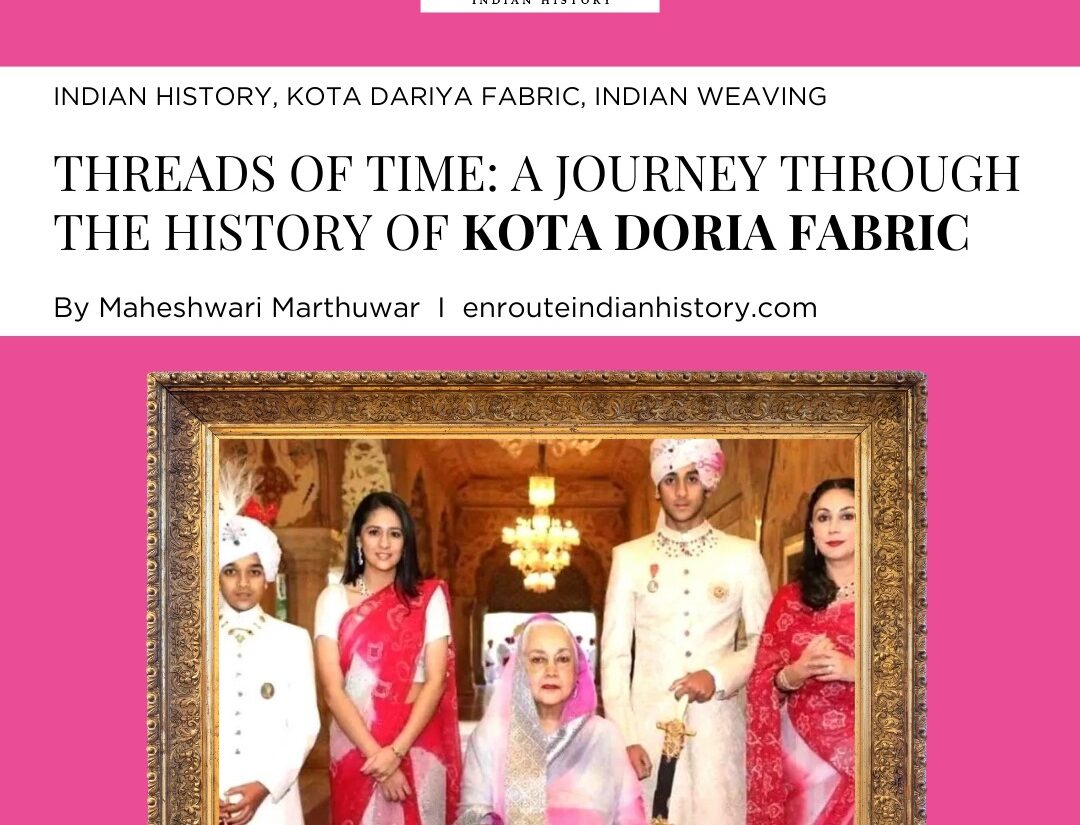
The traditional Kota Doria, a masterpiece of Indian textile industry, showcases the intricate art of weaving cotton in a unique check pattern with an open weave technique that has been passed down through generations without any written records of its inception. The distinctive square Khat pattern sets Kota Doria apart from other hand woven crafts, making it a true marvel. Originating from Kota, a town in eastern Rajasthan, this craft is deeply rooted in the region, with various craft clusters in the town and its surrounding areas dedicated to the delicate weaving of saris known as “Masurias,” possibly named after weavers who migrated from Mysore. The term “Dori” or “Doria,” translated from comes from the word ‘dur’, meaning to ‘toil’ in the local Rajasthani language. And in Hindi as “Dhaaga,” highlights the magical skill and precision with which these fabrics are woven, creating a captivating visual appeal”.
Overall Usage Kota Doria Fabric

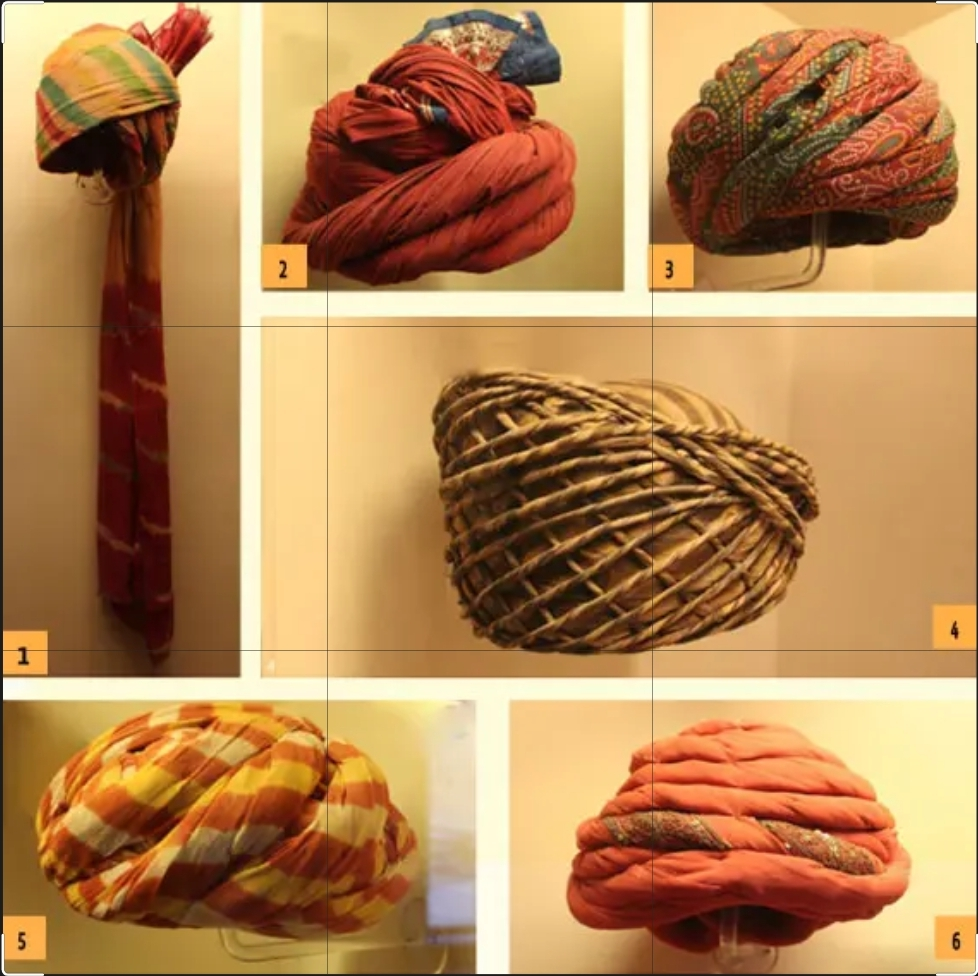
During the 17th century, Kota Doria was commonly worn as Pagdis, Safaas, and Odhnas by the Royal heads. However, it later transformed into dhotis with a width of 36 inches. The Fabric underwent a significant change when its width increased to 46-48 inches, making it suitable for draping as a beautiful Sari. The addition of Zari, which is gold or silver-plated thread, further enhanced the fabric’s appeal, adding a touch of luxury and paying homage to the Royal family who initially embraced the Kota Doria weave. Over time, Kota Doria has found various applications due to its lightweight and comfortable nature. Today, it is used to create fashionable garments such as sarees, suits, lehengas, stoles, scarves, and even home furnishings, making it a significant part of modern fashion, showcasing the journey of Kota Doria Fabric throughout history.
The true origins and nomenclature of this exquisite checked Fabric, which has stood the test of time for over two centuries, remain enigmatic, enveloped in an aura of secrecy. Countless mythical tales and legends have been woven by the skilled artisans, adding to the mystique and allure of this ancient craft.

The rich history of the exquisite craft known as Kota Doria or Kota Masuria spans over 250 years, with its origins shrouded in mystery and folklore. Legend has it that the craft first emerged in Mysore before making its way to Kota, where it is currently practiced, hence the inclusion of Masuria in its name. It is believed that weavers migrated to Kota due to the support and patronage they received from the royal families of Rajasthan, particularly The Prince of Kota and Rao Kishore Singh, A Prominent Mughal Army General who summoned weavers from the Deccan region to Kotain The Late 1600s. An alternative narrative recounts the journey of a Khatiya weaver from Kota to Chandeshwari in South India to delve into the intricacies of fine weaving. Upon his return, the Kota durbar generously rewarded him for his enhanced skills by creating a check pattern using alternating silk and cotton yarns, which remains a defining feature of this exquisite craft to this day.
Kota City During Mughal Empire Period
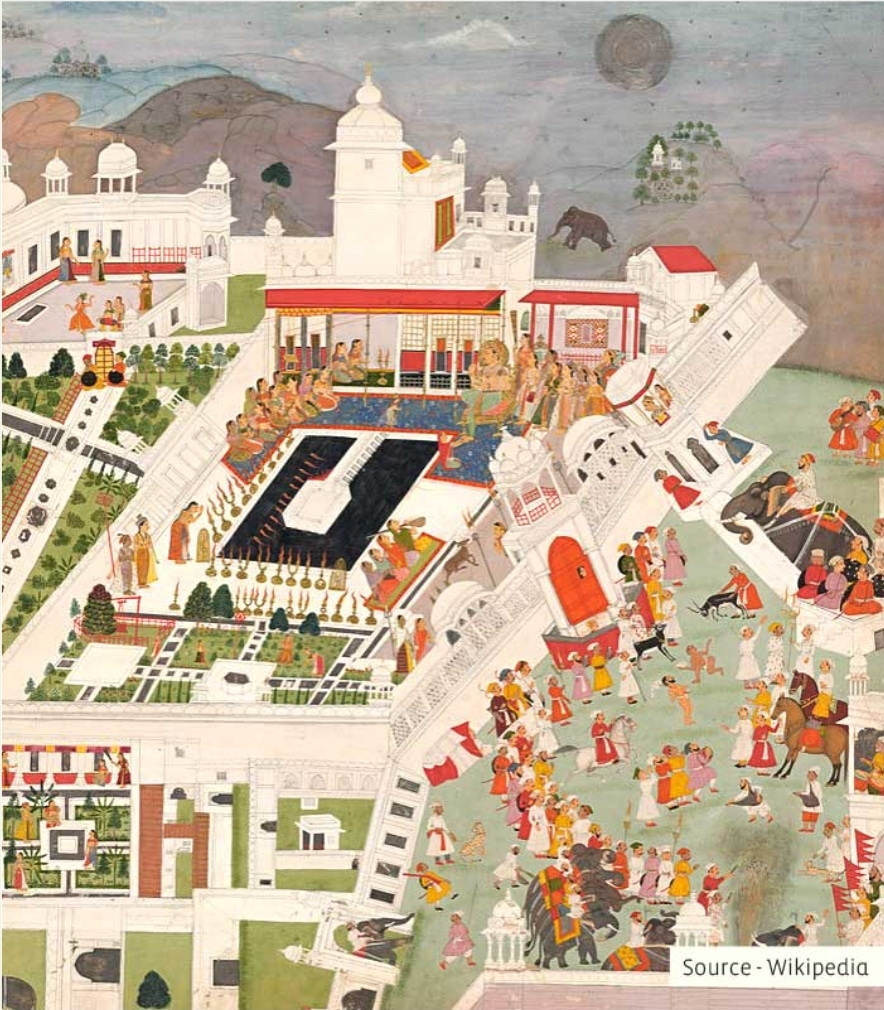
According to historical records, the roots of this weaving tradition can be traced back to the era of The Mughal Emperor Aurangzeb around 1665 C.E., when ‘Dorias’ were woven on a large scale. However, over time, this tradition survived primarily in Kaithun and its surrounding villages, where a textile symbolizing freedom and comfort paradoxically persisted as a form of dowry. Textile experts have proposed that the name of this craft alludes to the intricate square checks that closely resemble a Masoor lentil, challenging the popular belief that it originated from Mysore. Whether the name was inspired by a staple food denoting finesse or by skilled artisans from the South introducing the craft to the North, this vibrant summer essential continues to endure the test of time.
Historical documents, ranging from ancient State records to British accounts, indicate that fine cotton weaving and cotton cultivation date back to the 13th century, with Kaithun being identified as the primary weaving center. According to the book “Sarees of India,” Kota Sarees were first produced in Kotabetween 1707 and 1720 when weavers were brought from the Deccan region by Maharao Bhim Singh. The weaving tradition, which originated in Mysore, has been preserved in Kota, with artisans passing down their skills through generations. The intricate open khat or check pattern used in Kota Masuria weaving has garnered admiration from the elite, leading to its popularity and evolution over time.
Originally crafted using pure cotton, Kota Masuria sarees now incorporate synthetic and silk threads alongside cotton threads, enhancing their affordability and durability. While traditional Kota Doria sarees were traditionally white and required dyeing for colour, modern variations feature single-colour dyeing, shaded patterns, tie-dye techniques, and innovative designs. The introduction of printed Kota Doria and silk embroidered borders has further expanded the appeal of this craft, with new styles continuously emerging to cater to evolving tastes and preferences in the world of fashion. The exact origins of Kota Doria weaving craft remain elusive due to the lack of precise historical records. Consequently, determining the specific time period in which this craft first emerged poses a challenge.
Sources of Inspiration

The Rajasthani aristocracy had a preference for this textile due to its representation of elegance and sophistication. The sarees were predominantly white or beige in hue. Nevertheless, with recent alterations and enhancements to the Fabric, an infinite range of colours and various embellishments have been incorporated. Initially, the Fabric solely consisted of cotton, but later on, silk was also woven into it, adding a touch of chicness and refinement.
Faces Behind the Fabric
Kaithoon, also known as Kethun, is a town located in the state of Rajasthan, approximately 20 kilometers from the city of Kota. It is recognized as a municipality within the Kota District of the Indian state of Rajasthan. The town of Kaithoon is in close proximity to the Chamble River, adding to its scenic beauty and natural charm. One of the prominent activities in Kaithoon is the weaving of Kota Doria, which is deeply rooted in the traditions of the village. It is a common household activity, with each family owning at least one traditional pit loom for weaving purposes.

The ‘Ansari’ community in the Hadauti region, along with villages in southern Rajasthan such as Bundi and Baran districts, is renowned for their expertise in this craft, predominantly practiced by Muslim weavers. Due to the increasing use of machines, the number of handlooms used for weaving this Fabric has significantly declined, posing challenges for craftsmen who are struggling to sustain themselves despite their skill in this intricate craft. Additionally, there is a prevalent issue of counterfeit Fabric being produced, deceiving buyers into purchasing inauthentic products. To address this concern, the Rajasthan government has introduced a system where authentic Kota Doria products will bear a stamp as a mark of genuineness.
The Magic of Kota Doria – Characteristic and Varieties

The term “Doria” is translated as “thread” in English, which is quite fitting. This delicate Fabric is created by combining different weavings of cotton and silk yarns. The Kota Doria weave is a combination of simplicity and complexity, with each Khat consisting of 28 yarns – 14 warp and 14 weft yarns, out of which 20 are cotton and 8 are silk. The reed density is 140 threads per inch, with each inch containing 5 Khat. This unique Fabric comes in three styles : basic, printed, and zari, making it suitable for various occasions, be it casual or formal. The plain sarees of Kota Doria are characterized by checks made of slightly rough cotton texture or plain gold threads, while block printing is used to give them a modern touch. Zari work, on the other hand, adds grace and elegance to the sarees, making them even more appealing. The vibrant colors like pomegranate red, purple, turquoise, and saffron, along with the traditional cream and gold, are quite popular among consumers. Zari embellishments add a festive and elite touch to the fabric, with intricate floral patterns known as ‘bhuti’ enhancing the overall royalty factor. The main motifs used in decorating Kota Doria textiles include kairi (paisley/mango), flowers, leaves, and various geometric patterns like stars, circles, and squares. These patterns evolve into elaborate scenes depicting flora, fauna, and intricate geometric designs, making the Fabric truly unique and eye-catching. The delicate and porous nature of Kota Doria Fabric makes it ideal for surface ornamentation techniques such as batik, tie-and-dye, hand embroidery, Banarasi borders, Tissue Kota Work, and applique work. These techniques not only add contrast but also generate interest, showcasing the rich heritage of Indian handicrafts. Overall, Kota Doria Fabric is a perfect blend of tradition and modernity, making it a popular choice among those who appreciate fine craftsmanship and unique designs.
Introduction Process Of Kota Doria Fabric :
Various activities such as pirn winding, warping, dyeing, sizing, and more support the weaving process. Skilled artisans play a crucial role in weaving, handling tasks like spinning, dyeing, and weaving with expertise. These artisans use durable cotton or cotton-silk yarns to create delicate, lightweight, and sheer sarees.
- The design process for Kota Doria involves the designer receiving a digital image of the design, which is then scaled onto graph paper to fit the saree’s requirements. The designer adjusts the curves on the scaled drawing to align with the grid on the graph paper, ensuring the precise placement and shape of the design. A final color scheme is determined through a meeting with the master weaver. The drafting of the design typically takes around 2 days to complete, but for more intricate patterns, it can extend up to 6-7 days. The production process of Kota Doria is characterized by its unique and traditional approach, with various steps involved in the preparation and weaving of the fabric.
- The first step in preparing the yarn for Kota Doria involves winding the raw materials, cotton and silk, which are obtained from Ahmedabad and Surat in the form of hanks. This winding process, known as pirn winding, transfers the yarn from the hanks onto spools that will be used in the weft during weaving. Indigenously made ‘charkhas’ are used for this process.
- Next, the warp is prepared by using a method called Peg Warping, also known as ground/street warping. Wooden pegs, locally called pinjaras, are used in this process. A pinjara, which is a thread reel holder, is filled with thread reels. Each yarn required for the warp is manually tied to the hatha, which is kept near the feet. The pinjara and the hatha are then taken outside for the next step.
- These pinjaras are placed along the entire length of the yarn, creating a criss-cross pattern. This criss-cross pattern helps in identifying any broken yarns during the weaving process. The pinjaras are placed below a thick rope that is tied to a pair of iron pegs on each end. The length of the rope determines the length of the warp being prepared, which is currently 40 meters, considering that five saris are woven on a loom at a time.
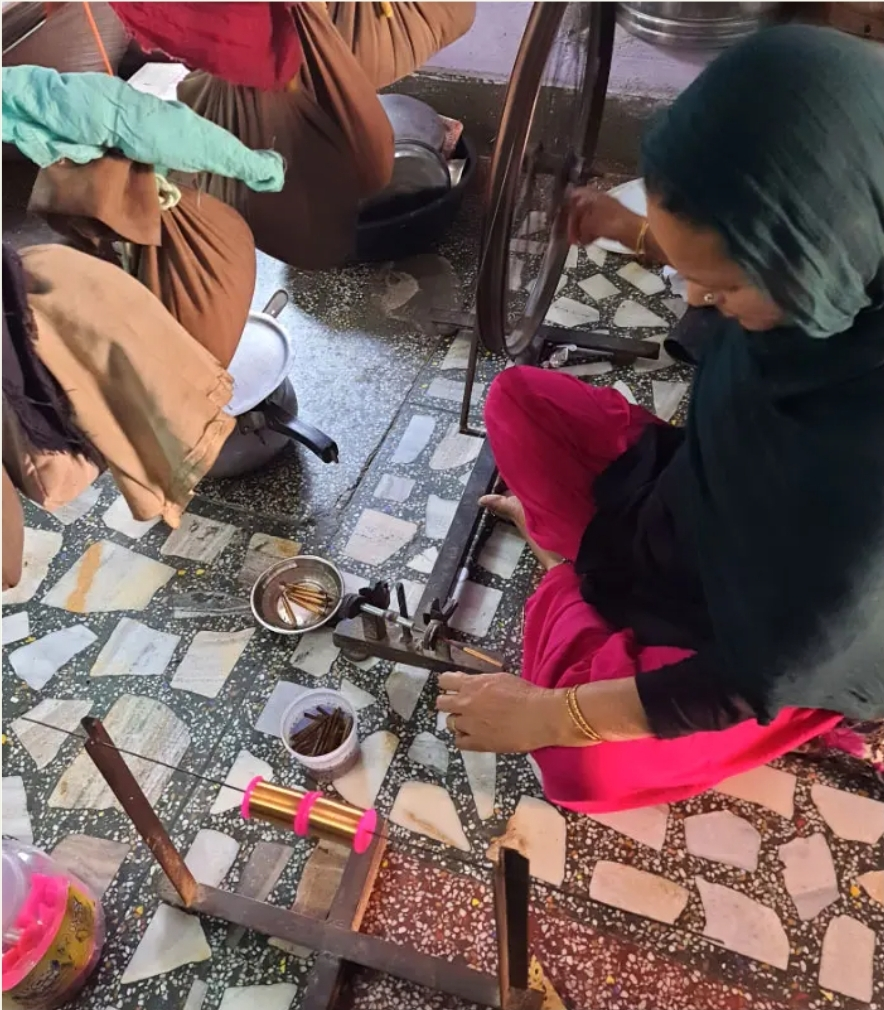
5. Silk and cotton yarns are dyed by dyers using direct dyes for their ease of use and good retention on both types of fibers, along with occasional use of wet and naphthol dyes. The yarn bunch undergoes washing in a detergent and water solution before the dyeing process begins. Direct dyes are applied differently for cotton and silk, with cotton being dyed in boiling water and silk in warm water with acetic acid. Cotton hanks are immersed in the dye pool after the dye is prepared, and circulated using metal rods for even distribution. The cotton hank is left in the dye solution for a short period before removing the vessel from the heat source. Silk yarn, on the other hand, is left in the dye solution for a specific duration before being taken out. Both silk and cotton yarns are then dipped delicately in a dye fixer solution multiple times before being hung to dry for the rest of the day.

Preparation of the loom :
- The initial step in preparing the loom involves drafting, which entails passing the yarn through the loom’s healed based on the desired design for weaving.
- Following drafting, denting is carried out by skilled craftsmen or individuals proficient in this task. This involves filling the reed, a comb-like structure known as ranch locally, with the yarns. The reed is crafted from a unique type of bamboo that is exclusively found near Banaras.
- Lastly, piecing is performed to add new yarn to the remaining yarn in the reed, ensuring the continuous progress of weaving.
- The loom setter is responsible for manually setting the threads in the warp direction, meticulously examining the graph paper designs to determine the placement of motifs and colors. The time required to set up a loom can range from two to five hours, depending on the complexity of the designs.



5. The weaving process of Kota Doria Fabric is carried out using a simple pit loom that can be constructed by local carpenters in the villages. The technique employed is traditional, known as the throw shuttle technique, which does not involve the use of any gadgets for the back and forth motion of the shuttles across the Fabric’s width. This allows the weaver to have greater control over the design and the beating of the reed to achieve the distinctive ‘khat’ pattern. Surprisingly, the weavers in this region are able to create intricate structural patterns in Kota Doria Fabric using only two pedals and the ‘khat’ pattern, which is a square check pattern. While the cramming of the yarns in the warp direction is done mechanically, it is the inherited skill of these weavers that enables them to skillfully handle both silk and cotton yarns, ensuring that the silk yarns are lightly beaten to create the square check pattern. The square check patterns can vary in number and composition, depending on the desired structure, with different ratios of cotton and silk yarns. For instance, a 300-khat pattern consists of 14 yarns in a ‘khat’, with 8 being cotton and 6 being silk. In addition to the traditional method, some more intricate designs and motifs are created using a Jacquard loom, which saves time but requires a higher level of skill.
Significance in Today’s Generation
In today’s generation, Kota Doria Fabric and sarees have gained immense popularity not only in India but also in other countries. This Fabric is loved for its breathability, comfort, and elegance, making it a popular choice for daily wear as well as special occasions. It is also used to make other garments such as kurtas, dupattas, and scarves. The demand for Kota Doria Fabric has increased in recent years due to its eco-friendliness. The Fabric is made from natural fibers and is handwoven using traditional techniques, making it a sustainable and environmentally friendly choice. With the rise of sustainable and ethical fashion, Kota Doria Fabric has become a favorite among conscious consumers.
Economic Development
The Kota Doria industry has played a significant role in the economic development of the region. It has provided employment opportunities to thousands of weavers and their families, helping them to sustain a livelihood. The weavers of Kaithoon and surrounding villages are highly skilled in the art of weaving Kota Doria Fabric and have passed down this craft from generation to generation. The popularity of KotaDoriya Fabric has also led to its export to other countries, contributing to the growth of India’s textile industry. The government of India has also taken several initiatives to promote and support this industry, such as setting up training centers for weavers and providing financial assistance to them. The handloom sector, including the Kota Doria industry, is a crucial part of India’s cultural heritage and is recognized as a significant contributor to the country’s economy.
In the present time, Kota Doria Fabric has made a comeback and is widely used in the fashion industry. The Fabric has undergone a transformation, from being used in traditional attire to being incorporated into modern and contemporary designs. The lightweight and translucent nature of the Fabric make it a favorite among designers and fashion enthusiasts, and it has been featured on runways all over the world.
The journey of Kota Doria Fabric from the loom to the fashion runway has not been an easy one. The production of this Fabric is a labour of love, with each step of the process requiring skilled craftsmanship and attention to detail. The delicate Fabric is made by weaving fine cotton or silk yarn in a unique check pattern, creating a mesh-like texture that is synonymous with Kota Doria fabric.

With the rise of fast fashion and mass production, the future of traditional textiles like Kota Doria was uncertain. However, efforts have been made to preserve and promote the Fabric through government initiatives and collaborations with designers and fashion houses. Today, Kota Doria Fabric has become a symbol of sustainability, with its handcrafted production process and use of natural materials.
The popularity of Kota Doria Fabric has even spread beyond Indian borders, with designers from the West incorporating the Fabric into their collections. The global recognition of this Fabric has sparked a renewed interest in traditional Indian textiles and has led to collaborations between Indian weavers and international designers.

The history of Kota Doria Fabric is a testament to the resilience, timelessness, and adaptability of traditional textiles. From its humble origins in a small town in Rajasthan to its presence on fashion runways across the world, this Fabric has stood the test of time and continues to be a symbol of cultural heritage and artistry. As we move towards a more sustainable and conscious approach to fashion, the use of traditional fabrics like Kota Doria will undoubtedly continue to grow, and its journey through time will carry on.
Reference
- Aarav, KotaDoria – Characteristics, Process, Popularity & Challenges, December 2020.
- Adella Cabe, Indian Fashion Understanding The Indian Saris KotaDoria, Independently Published, 2 August 2021.
- Dhamija, J., & Jain, J, Hand Woven Fabrics of India. Mapin Publishers, 1989.
- Gargi Sethia, KotaDoria- Kaithun, Kota, Photos Collected.
- KotaCity Blog, Welcome to Kota, 2020.
- KotaDoria Sarees, Access On 2024.
- KotaLive. (n.d.), History of KotaDoria Saree,
- Ministry of Textiles, G. o. (Director), KotaDoria Weaves : Rajasthan [Motion Picture], June 2021.
- Sundari Silks India, Chronicles of KotaDoria, 9th July 2021.
- Quazi, A, KotaDoria Saree: Weavers struggle, no direct market access, Kota: Hindustan Times, 2015.
- Woven ⋮ KotaDoria.
- May 15, 2024
- 6 Min Read





